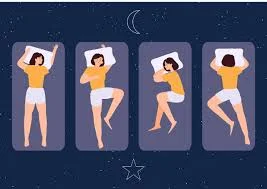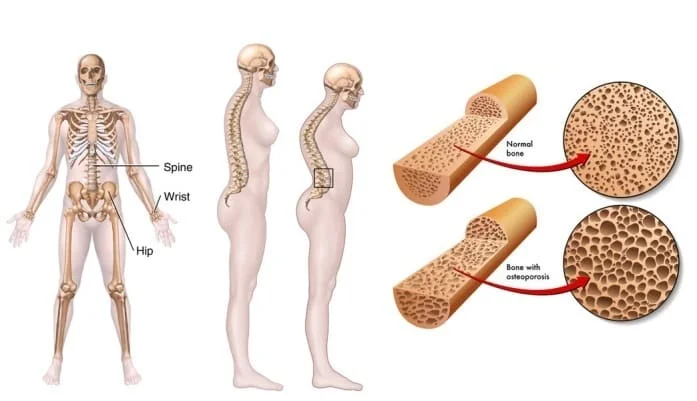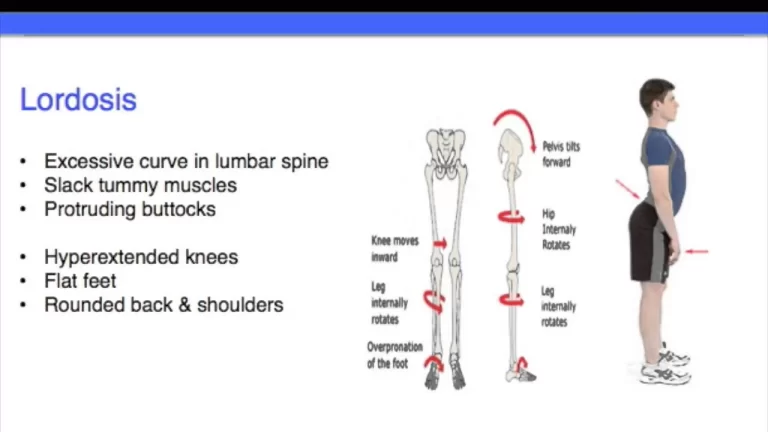Choosing the Best Posture For Sleeping for Your Body
Introduction
Achieving the best posture for sleeping is crucial for overall well-being and quality rest. Proper sleeping alignment not only promotes spinal health but also enhances comfort, reduces the risk of pain and discomfort, and contributes to a more restorative sleep.
You are aware of the health benefits of sleep; a new investigation determined that seven hours per night was the most effective amount. However, it now appears that whether you sleep on your side, flat on your back, or prone, there may be more effects on your health and well-being. That could be a big difference, given that you spend a third of your day in bed.
The “best” sleeping posture varies from person to person, so defining it is a difficult process. It is contingent upon your unique health circumstances, personal opinions, and sleep goals. We can, however, define the following broad guidelines for the ideal sleeping position:
- Spinal Alignment: The best position keeps your back in a neutral, comfortable position. It means that you should have a gentle curve in your lower back and a straight head, neck, and back.
- Pressure Relief: Your posture should reduce the amount of pressure on your body, especially on your knees, hips, neck, and shoulders. By doing this, you can avoid pain and discomfort when you sleep.
- Breathing Ease: You should be able to breathe easily and freely all night long with this posture. This is especially important for those who suffer from sleep apnea or snoring.
- Individual Needs: Take into account any particular diseases or pain you may be experiencing. For instance, some postures may be more beneficial for neck aches, heartburn, or back pain.
Based on these principles
- Side sleeping: Sleeping on one’s side is generally thought to provide the best alignment and pressure relief. For support, use a medium-firm pillow and wrap another pillow between your knees.
- Back sleeping: Beneficial for nasal obstruction and neck pain. Consider using a tiny pillow to support your lower back in addition to opting for a thinner pillow or none at all.
- Sleeping on one’s stomach: Not advised because it puts strain on the neck and spine. If necessary, use a thin pillow or none at all, and think about using a pillow to support your pelvis.
Types of Sleeping Positions
Fetal position: It looks like a lot of us continue to sleep in the same manner as our newborns. It’s thought to be the most popular sleeping position, with 47% of all Americans sleeping in this curled-up position. In addition, 54% of women and 39% of men sleep in this position.

Fall position: 17% of the participants in the research were found to be lying on their stomachs, with their heads turned to the side and their arms tucked under or wrapping a pillow. Although it’s the second most popular sleeping position, roughly 25% of Americans think it’s the worst position. Try not to ask introverts too many questions about this position, as they also maintain to have the strongest aversion to it!

Yearner position: Are you having trouble finding the ideal posture for sleeping? The Yearner position is the best option if you’re itching for a restful night’s sleep. This position, which involves lying on your side with both arms extended in front of your body, comes in close third with 13% of Americans sleeping in this manner. Talk to a Baby Boomer if this is a position that interests you, as they are more likely than Millennials and Gen Xers to sleep in this manner.

Soldier position: In addition to indicating the name of the fourth most popular sleeping position, which is favored by 11% of the population under investigation, a soldier can also be a person who serves in the armed forces.
When sleeping, people who lie on their backs with their arms lowered and near to their bodies are more likely to either not move at all during their sleep or to move only once, as opposed to people who sleep in the Fetal, Freefall, or Yearner positions. Along with Log and Starfish sleepers, they are also more likely to claim that they sleep in this manner due to its health benefits.
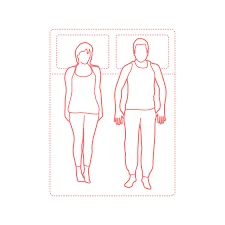
Position of starfish: Good news for all of you who enjoy the sea. Seven percent of the population under investigation are marine invertebrate sleepers. These sleepers are more likely than those in the other positions to claim that they sleep in that manner due to its health benefits, similar to those in the Log and Soldier positions. But along with log sleepers, these people also have a higher chance of sleepwalking. They sleep on their backs with their arms raised close to their heads or pillows.

Position of the log: A log is more than just a piece of wood you throw on a fire to stay warm. In actuality, it is one of the six primary sleeping positions, and 6% of people adopt this posture. Although it’s the least common way to sleep, people who sleep on their sides with both arms lowered believe they’re healthier than people who sleep in other positions.
Side sleep: log
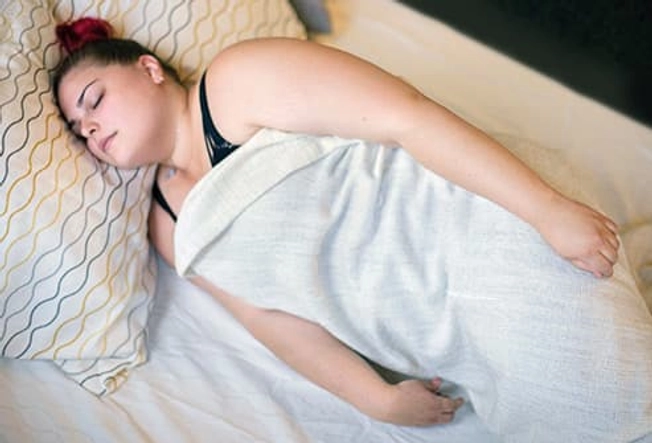
This occurs when you sleep on your side with both arms down. Approximately 15% of people “sleep like a log.” According to some studies, you may be naturally friendly, while easygoing, and trusting.
Side Position: Spooning

You may wake up more frequently when you are close to your lover, but hugging can be beneficial to your health. It causes your body to release a chemical called oxytocin, which can help you relax, bond with your partner, and fall asleep faster.
If You Snore
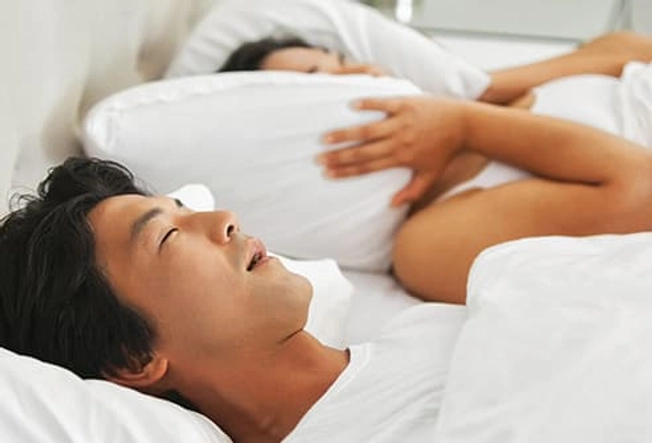
Side sleeping helps reduce nighttime noise levels. If you like to sleep on your back, stacking a couple of pillows can help. Consult your doctor if your snoring causes you to gasp for air, leaves you weak the next day, or wakes you (or your partner) up.
Loud snoring may indicate that you have sleep apnea, a disorder that causes your breathing to stop and restart during sleep. It can cause strokes, high blood pressure, and heart disease.
Which Position Is Best for Sleeping?
The best sleeping position is one that supports a normal alignment of your spine from your hips to your head. What it means for you will vary depending on your comfort level and unique health conditions.
However, some positions are regarded to be healthier than others. Specifically, it’s believed that sleeping on your side or back is preferable to sleeping on your stomach. It’s easier to maintain your spine balanced and supported in either of these sleeping positions, which releases pressure from the spine and allows your muscles to relax and recover.
If you have a medical problem or suffer from back pain, you may benefit from the many benefits of different sleep postures. For the benefit of more peaceful sleep in some cases, it may be worthwhile to attempt a different sleeping position. Adults experiencing back discomfort were educated to sleep on their sides or backs in one investigation. In just four weeks, they saw a significant decrease in their pain.
It takes some getting used to a new sleeping position. Don’t be forced to switch to a different position, though, if sleeping on your stomach suits you. With the correct mattress and pillow, you can reduce your risk of pain and improve your spinal alignment.
- Sleeping on Your Side
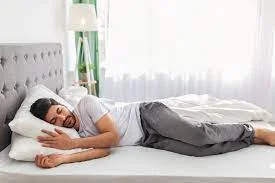
Over 60% of people sleep on their sides, with men doing so more frequently. When we were kids, we spent our nights sleeping in every position possible, but as we became older, there was a significant preference for sleeping on the side. The flexibility of our spine reduces with age, which may make the side sleeping posture a better choice for older people.
There are many benefits to sleeping. It is the least possible sleeping position to cause back pain since it improves proper spinal alignment, especially when pillows are used for support. In addition, side sleeping can reduce snoring and heartburn, making it especially advantageous for:
- Pregnant women
- People suffering from acid reflux
- Those who have back pain.
- Those with sleep apnea or snoring.
- Older people
Is There A Downside To Lying on Your Side While You Sleep?
For those who are concerned about wrinkles or have shoulder trouble, sleeping on one’s side is not advised.
It’s advisable to switch positions sometimes and use the right pillow and mattress because side sleeping might cause shoulder pain or tightness. Make sure the “give” in your mattress is sufficient to let your shoulders and hips sink in farther than your middle spine.
Because your face is forced against the pillow as you sleep on your side, the skin is compressed and stretched, which can also lead to facial wrinkles.
Which Side Is Better than the Other?
Choose to sleep on your left rather than your right side if you’re currently a side sleeper and want to achieve that perfect sleep position. Because sleeping on your right side puts more strain on your internal organs, physicians advise sleeping on your left for those who have acid reflux or gastroesophageal reflux disease (GERD), as well as pregnant women. Additionally, heartburn symptoms can aggravate if you sleep on your right side.
- Having a Back Sleeping Position.
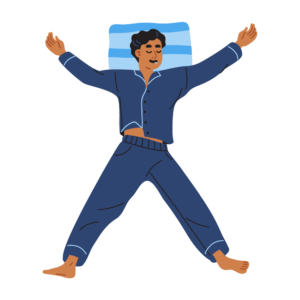
The second most common sleeping position is on one’s back, which has many advantages over resting on one’s side. It’s simple to maintain your spine in alignment and equally distribute your body weight when you’re flat on your back, which helps to avoid any potential neck or back issues. If you sleep on your back and maintain an upright posture, you can also get relief from allergies or stuffy nasal passages.
The benefits of resting on your back extend to your skin. There isn’t a pillow or mattress resting against your face to cause wrinkles because you are facing upward. Sleeping on your back may be particularly beneficial for:
- Individuals suffering from back pain
- People worried about wrinkles
- Those who experience neck pain
- Individuals suffering from nasal congestion
Is There a Disadvantage to Sleeping on Your Back? It’s not advised to sleep on your back for:
- Pregnant mothers
- People experiencing specific kinds of back pain
- GERD or acid reflux sufferers
- Heavier adults
- Senior citizens
The worst sleeping position for those who snore or have sleep apnea is on your back since it increases your risk of airway collapse. The majority of persons with position-dependent sleep apnea experience worsening symptoms when they lie on their backs. Because of the force of gravity on the human body, breathing on our backs gets more difficult as we age or gain weight.
Furthermore, whereas some people find that resting on their backs relieves their back discomfort, others discover that it makes it easier. A little space between your lower back and the mattress surface may develop, depending on how firm your mattress is, and this could cause painful lower back strain. This can be fixed by putting a thin pillow there or a pillow under your knees. In either case, you’ll support your spine’s natural curve and reduce pressure. Throughout the night, you can alternate between sleeping on your side and on your back.
2. Sleeping on Your Stomach
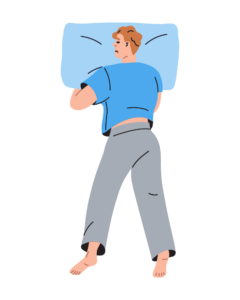
The least common sleeping posture is on one’s stomach. Less than 10% of our nights are dedicated to sleeping in this position, according to research. There are indeed some advantages to stomach sleeping. In particular, lying on your stomach can help reduce snoring since it widens your airway. But to breathe in this posture, your ribs do have to strain against gravity, which could require more energy and lead to less peaceful sleep.
What’s Wrong With Stomach Sleeping?
Due to its many drawbacks, most people do not advise resting on their stomachs. People who should particularly avoid sleeping on their stomachs include:
- Pregnant mothers
- Those who experience back or neck pain
- Concerns regarding wrinkles
Of all the sleeping positions, the stomach position offers the least support for the back and puts greater pressure on the spine, which could result in pain when you wake up. You have to sleep with your head turned to one side to sleep on your stomach, which always causes your head and neck to twist and contradiction with the rest of your spine. Your hips and stomach will sink into an insufficiently firm mattress, causing your spine to be awkwardly stretched out of position. Over time, this type of uneven sleeping posture might cause harm to your spine. As your face is forced against the pillow or the mattress, sleeping on your stomach may cause wrinkles.
Choose a position
That sleep posture is less significant for young, healthy individuals. However, sleep position can alter to a positive or negative posture as you age and have more health problems.
Think about the following before turning out the light:
The Proper Way to Sleep During Pregnancy

If you are pregnant:
Pregnant women are advised by experts to sleep on their sides with their knees bent. Sleeping on one’s side allows the heart to pump more smoothly and blood to circulate more freely throughout the body because it removes the strain of an expanding tummy. The left side is especially advised since it relieves pressure on the liver and promotes normal blood flow to the heart, uterus, kidneys, and fetus.
You can occasionally sleep on your right side to reduce pressure on your left hip if you find it uncomfortable to sleep on your left side while pregnant. Pillows under the abdomen, between the knees, and in the small of the back can also help release stress.
Sleeping on your side is frequently more comfortable—and healthier for you and your baby. And the left side may be superior because it can deliver more blood and nutrients to your kid. If you suffer back pain, place a cushion under your tummy to support the weight. It is also beneficial to bend your knees and place a pillow between your legs
Best Sleeping Position for Back Pain
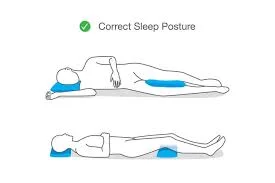
If possible, you should sleep on your side with a blanket or pillow between your knees. For people who have back or neck pain, lying on their side can also help reduce symptoms.
Select a pillow whose thickness, or loft, corresponds to the space between your shoulder and neck. When you sleep on your side, a thicker pillow will keep your neck and spine in alignment, reducing stiffness and soreness and maintaining the most effective alignment.
The Proper Sleep Position for Painful Necks
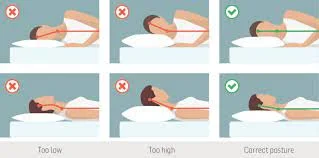
The most beneficial sleeping position for neck pain is on your back because it avoids misalignment that can happen when you lie on your side or stomach. Use a cushion that supports your neck and allows your head to sink deeper to avoid neck pain. Head divot pillows and memory foam pillows are great options. Alternatively, place a flatter cushion under your head and roll a towel below your neck.
When you’re lying on your back, try to maintain identical arm postures. For example, it is better to have them both lie by your sides rather than one resting on your forehead, as this might lead to spinal irregularities and aggravate neck or shoulder pain.
Best Sleeping Position for Noisy Nose

Pillows might help elevate your upper back and keep your spine from collapsing if you’re suffering from allergies or a congested nose. This position may help you drain your nose and keep your airways open. Avoid laying flat on your back as this may increase congestion in your nose
Back and neck discomfort /If You Have Back Pain.
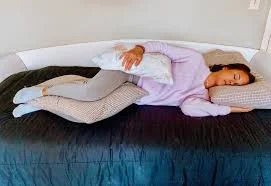
There are mixed results when it comes to sleeping on your back for pain relief. Sometimes sleeping face up increases neck pain in those who experience it. But a lot of people discover that sleeping on their backs helps to relieve low back pain.
Side sleeping is also advantageous in this respect as well. To relieve even more pressure on your hips and back, place a pillow between your legs. If you sleep on your back, place one under your knees to maintain your back’s natural curve.
Obstructive sleep apnea

(OSA) is characterized by snoring and pauses in breathing during sleep due to the collapse of the airways. It frequently coexists with snoring. lying on your side or stomach can help keep your airways open, which may reduce snoring and treat moderate apnea.
Heartburn and reflux:
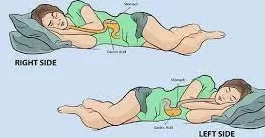
lying on your right side may aggravate heartburn symptoms. This is valid for both individuals with gastroesophageal reflux disease (GERD) and those experiencing heartburn from other causes, such as pregnancy. To reduce the burn, turn to your left.
Compared to the left lateral position and the prone position, the right lateral sleeping position causes significantly more reflux during the night
Sleep position and sleep paralysis
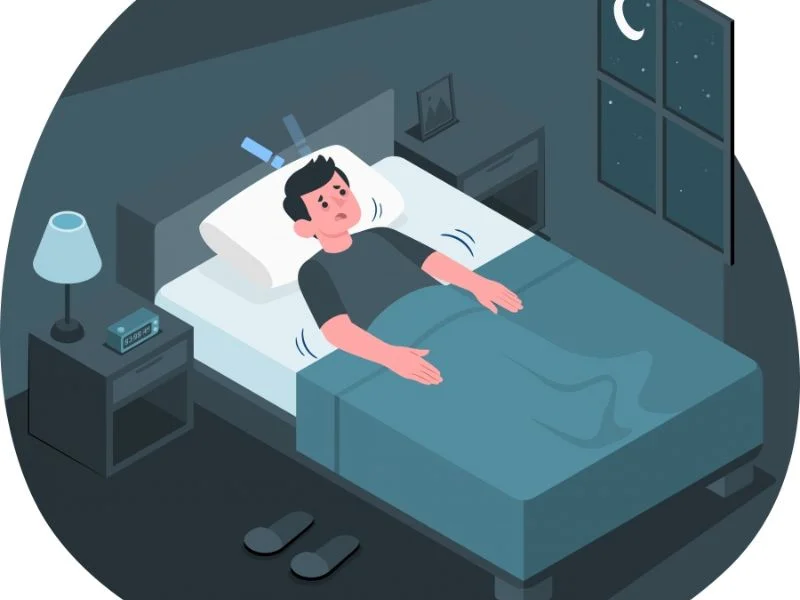
A greater possibility of sleep paralysis has been associated with supine sleeping.
Position of sleep and snoring
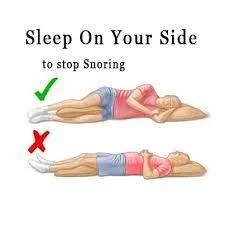
People who are at risk of developing obstructive sleep apnea are advised to sleep on their sides with their upper bodies elevated by at least 30 degrees. Sleeping on one’s side can also help reduce snoring, which may or may not be a sign of obstructive sleep apnea.
Heart disease and sleeping posture

Current research has indicated that the right lateral decubitus position is good for the heart. Specifically, one study used spectral heart rate variability analysis to evaluate the autonomic physiological effects of three different sleep positions (supine, left lateral decubitus, and right lateral decubitus) in healthy participants. According to the findings, subjects’ cardiac vagal activity reached its highest when they were in the proper lateral decubitus position.
Physical appearance: If you slept on a side or stomach, you have most likely observed wrinkles on your face when you woke up. that may result in breakouts or cause chronic changes to the skin. Going to sleep on your back is also a good idea if wrinkling disturbs you.
How to Sleep Better on Your Stomach
Anxiety and discomfort can easily result from sleeping on one’s stomach if the pillow and mattress are not suitable. You can, however, get a good night’s sleep in this posture. Try using a very thin pillow or none at all if you like to sleep on your stomach. By doing this, you can prevent further spinal misalignment and discomfort caused by tilting your neck back and up. Under your hips, place a thin pillow to further realign your spine and release pressure. Some of the problems with spinal alignment that arise from sleeping on your stomach can also be avoided with a firm mattress.
Whichever sleeping position allows you to have a pain-free, uninterrupted night of sleep and wake up feeling refreshed is the ideal position for you to sleep in. If that’s how you now sleep, don’t feel pressured to switch. However, feel free to attempt a different posture if you believe it will improve your quality of sleep. Use these strategies and exercise tolerance to help yourself become used to your new role.
The way you sleep has an important effect on how well you sleep. Making adjustments is just one of the methods you might attempt to improve your quality of sleep.
Sleeping Position
- The way you sleep affects how much pressure is on your back. The least amount of pressure is applied when sleeping on your back, then on your side. The most stressful sleeping position is on one’s stomach. Whenever possible, try to sleep on your side or back as opposed to your stomach.
- If you sleep on your back, place pillows under your knees and neck.
- To keep their spines in alignment, side sleepers should place pillows between their knees and between their ears and the bed. Both of your legs should be bent, and your upper leg should be parallel to or slightly behind your lower leg.
- When sleeping on your stomach, use a small pillow to keep your head in an aligned or neutral position.
Set Up Your Mattress for Comfort
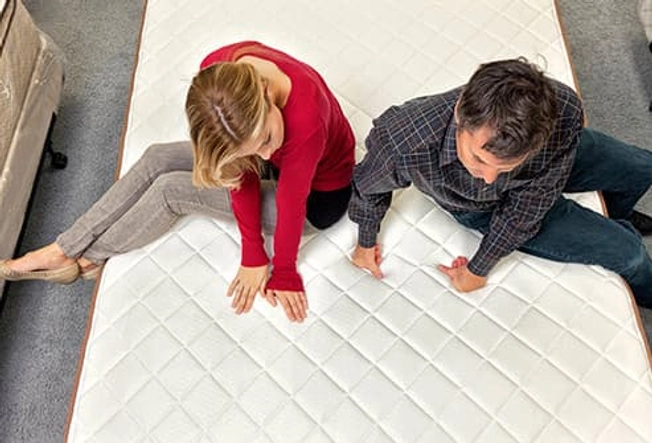
If none of those worries connect with you, you can follow your comfort.
However, there are other factors to think about in addition to sleep posture when trying to get a good night’s rest.
suggests changing out worn-out pillows and mattresses. Opting for soft or hard depends only on personal preference, but she advises aiming for something supportive. A neck-cradling supportive pillow might be useful if you suffer from shoulder or neck pain. Lower back pain may subside if the legs are supported by a bolster or pillow.
Make sure your bedroom is as comfortable as possible to help you get a restful night’s sleep.
- Clean sheets: To prevent dust and dander from causing allergies and reducing the quality of your sleep, clean the mattress and wash the bed sheets regularly.
- Close the blinds: To keep the room dark at night, use blinds or curtains. However, to reset your internal clock, open the curtains in the morning or go outside.
- Location is important: Arrange your bed so that distractions like a workstation full of papers or a light that is flashing are not in your line of eyesight.
Choosing a Neck Pillow
- When choosing a pillow, take into account the firmness of your mattress, your favorite sleeping position, and the depth of your neck curve.
- Choose a pillow that supports your head and enhances the curve of your neck.
- In case you sleep on your back, make sure the pillow covers the area between your neck and the bed. You most likely have an oversized cushion if you can see your feet.
- For side sleepers, the pillow should occupy the area that exists between the bed and the ear. Choose a pillow that is thicker than what back sleepers often use.
- If you sleep on your stomach, elevate your head with a little pillow at night. The thickness of the pillow will depend on how firm the mattress is. You can sink into a soft mattress while you’re sleeping. Choose a pillow that is sufficiently thick to bridge the gap between your head and the mattress.
- If you think your pillow is too high, change or adjust it. To make foam thinner, you can cut it or take the padding out.
- If the thickness of your pillow is too low, raise it with foam, fills, or folded towels.
- Your pillow’s thickness and size may vary depending on your mattress pad. Select or measure a pillow first, then, if you want one, choose a pad.
What is the importance of sleeping posture?
One cannot stress how important good posture is when sleeping! It is important to many facets of your physical and mental health, affecting everything from mood to sleep quality to pain management. Proper posture when sleeping is important for the following reasons:
Spine Health:
- Alignment: Good posture preserves your spine’s natural curves while you sleep, avoiding misalignment and putting stress on your muscles and ligaments. This is especially beneficial for people who are more prone to neck and back pain.
- Disc Protection: The intervertebral discs, which act as shock absorbers between your vertebrae, may be compressed by misaligned postures. By keeping them healthy and cushioned, good posture lowers their risk of disc herniation and the pain that goes along with it.
Improved Quality of Sleep:
- Breathing: By keeping your airways open, certain positions, such as side sleeping, may reduce snoring and sleep apnea and promote deeper, more restful sleep.
- Comfort: By keeping your alignment correct, you can reduce pressure points and muscle tension, which will help you sleep through the night without tossing and turning.
Overall Health Advantages:
- Pain Relief: Proper sleeping posture assists in reducing headaches, neck pain, and backaches by reducing the strain on muscles and joints.
- Improved Mood: The quality of your sleep has a direct effect on your energy and mood. Because of your improved posture, you’ll probably wake up feeling happier, more alert, and prepared to face the day.
- Decreased Risk of Health Conditions: Heartburn, acid reflux, and even some neurological disorders have all been related to poor sleep posture. Sleeping with proper posture can improve one’s general health.
What is the bad posture for sleeping
Poor sleeping positions strain your body excessively, especially your neck, spine, and joints. Pain, stiffness, and even long-term health issues may result from this. Here are a few of the most typical incorrect sleeping positions:
- Generally speaking, sleeping on your stomach is the worst position to be in. Your head is frequently turned to one side, and your spine is out of alignment, which puts a lot of strain on your neck, back, and shoulders.
- Sleeping in the curled-up fetal position: Although this position can be comfortable if you hunch your shoulders or twist your hips, it may also strain your neck and lower back.
- Sleeping on your back with your head turned back can cause headaches and strain the muscles in your neck.
- Using a bad or out-of-date mattress to sleep on An excessively soft or firm mattress can cause pain by misaligning your spine.
The following advice can help you keep a proper sleeping posture:
- Go to bed on your side or back. The ideal positions for spinal alignment are these two.
- Make use of a pillow to support your neck and head. The ideal pillow should be just firm enough to support your head and spine in alignment, without being too rigid as to cause neck strain.
- If you prefer to lie on the other side, place a pillow between your knees. Your hips will stay in alignment if you do this.
- Use a flat pillow or none at all if you have to sleep on your stomach. This reduces the chance of straining your neck.
- Get a high-quality mattress. A comfortable mattress that supports your spine without being too firm is necessary for restful sleep.
Risk Factors
Having a stomach sleep:
- The most frequent risk factor for stomach sleeping is neck pain because it results from turning your head to one side, which strains the muscles in your neck.
- Back pain: Sleeping on your stomach can strain your back muscles due to the unnatural curve of your spine.
- Shoulder pain: Another common symptom of stomach sleeping is pressure on the shoulders.
- Acid reflux: Sleeping on your stomach can exacerbate the symptoms of acid reflux or GERD.
- Snoring and sleep apnea: Snoring and sleep apnea can be exacerbated by stomach sleeping, which narrows the airway.
In the fetal position, sleeping curled up:
- Neck pain: If your head is turned or tilted, sleeping curled up can cause strain to your neck muscles, much like sleeping on your stomach.
- Lower back pain: The fetal position compresses your spine, which can strain the muscles in your lower back and cause pain.
- Hip pain: Your hip flexors may be strained if your knees are raised too high in the fetal position.
- Having your head tilted back while sleeping on your back:
- Pain in the back of your neck: This position may cause strain on the muscles in your back.
- Headaches: Another factor contributing to headaches is the tension in your neck muscles from this posture.
Additional risk factors:
Using an outdated or unsupportive mattress: Regardless of how you sleep, a mattress that is too firm or too soft can cause pain and misalign your spine.
Certain medical conditions: Pregnancy and arthritis, for example, can increase the risk of pain and make it more difficult to maintain proper sleeping posture.
Precautions for Posture While Sleeping
General Tips:
- Maintain a neutral spine: Proper spinal positioning is important for proper sleeping posture, whether you sleep on your side, back, or stomach. Rather than being arched or hunched, your spine should have a natural, relaxed curve.
- Use supportive pillows: Use supportive pillows to keep your spine in alignment. Your pillow should hug your head and neck. Select a pillow that is neither too firm nor too soft, and avoid using several pillows at once.
- Invest in a quality mattress: Proper sleeping posture requires a supportive mattress that fits the curves of your body. Replace your mattress every seven to ten years, making sure it’s neither too firm nor too soft.
Specific Precautions for Different Sleeping Positions:
- When sleeping on your back, keep your spine straight and support your lower back by placing a pillow under your knees. Sleeping with your arms above your head can put a strain on your shoulders.
- Side sleeping: To maintain the alignment of your hips and spine, place a pillow between your knees. Select a pillow that will allow your neck and head to remain in alignment with your spine.
- Stomach sleeping: Since it can aggravate your neck and back, this is usually regarded as the least comfortable sleeping position. Choose a thin pillow or don’t use one at all if you have to sleep on your stomach. A pillow under your hips can support the alignment of your spine.
Additional Guidance:
- Stay away from sleeping in the fetal position, as this can put a strain on your neck and back even though it may feel comfortable.
- Before going to bed, do a few gentle stretches to help improve your flexibility and loosen up your muscles. This will help you maintain proper sleeping posture.
- Create a regular sleep schedule: You can better control your sleep cycle and sleep quality by going to bed and waking up at the same time every day.
- Set up a calming bedtime routine. You can relax before going to bed by reading a book, having a warm bath, or listening to soothing music.
- Sleep on your back or side: The two positions that are ideal for spinal alignment when sleeping are on your side or back.
- Use a supportive pillow: Make use of a supportive pillow to keep your spine in alignment. Your pillow should hug your head and neck.
- If you sleep on your side, place a pillow between your knees to keep your hips in alignment.
- Stretch before bed: Before going to bed, do a few gentle stretches to help improve your flexibility and loosen up your muscles. This will help you maintain proper sleeping posture.
- Invest in a good quality mattress: Purchase a high-quality mattress: A comfortable mattress that supports your spine without being too firm is necessary for restful sleep.
Conclusion
Choosing the optimum sleeping posture is ultimately up to your personal needs and tastes, but keeping your spine aligned and comfortable are important factors. Here’s a summary of the leading contenders, plus some more outlook visuals:
Side sleeping:
- The Golden Child: This popular option keeps your spine in a neutral posture, reducing pressure on your back and neck.
- Bonus Benefits: Side sleeping can be beneficial for people suffering from snoring or heartburn, and placing a pillow between your knees can help relieve back pain.
- Comfort Customisation: Try different pillow heights and firmnesses to find the ideal cradle for your head and neck.
Back Sleeping:
- Spine Saviour: This posture automatically aligns your spine, making it great for anyone who suffers from neck or back pain. It also opens up your airways, which may reduce snoring.
- Bonus: Breathe Easy. Backsleepers, rejoice! For those who suffer from nasal congestion, this position is a welcome relief.
- Cozy Tips: Place a pillow between your knees to provide additional lumbar support, and select a medium-loft pillow to keep your head and neck in a neutral posture.
Honorable mention (proceed with caution):
- Stomach Sleeping: Although some people find it comfortable, it is not generally suggested. This position puts strain on your neck and back, which may compromise spinal alignment. If you must stomach sleep, get a thin pillow and arrange one under your hips to provide back support.
Remember:
- Listen to your body: Experiment with different positions and pillows to find the perfect sleep environment.
- Pregnancy Pillow Power: For the best comfort and support, pregnant women should sleep on their side with a full-body pillow.
- Doctor Knows Best: If you have any health concerns, visit your doctor for specific sleep position suggestions.
FAQs
Which direction is ideal for sleeping in?
Vastu suggests that the best direction to sleep in is…
The best directions to sleep in, according to Vastu principles, are east and south, with the legs pointing north or west and the head facing east or south. The scientific method of sleeping is also this. If sleeping with your face either east or south is not possible, you can opt to sleep with your face northeast or west.
What does poor posture while sleeping mean?
Highlights: Sleeping incorrectly can result in bone, muscle, or nerve injuries. Examples of these positions include the fetal position, lying on your front, just sitting up and partially lying down, and lying with your head resting on your upper arm.
Is it possible for me to sleep without a pillow?
The advantages and effects of sleeping without a pillow on the spine and…
It puts greater stress on your neck and back, which makes it difficult for your spine to keep its natural curve. Head flattening can occur when you sleep without a pillow. This might reduce some of the strain on your neck while supporting improved alignment
Is posture corrected by sleep?
Back and neck pain may be prevented or relieved by side sleeping in the fetal position, which is a curled position in which one leg is supported by bedding. Some people find that sleeping flat on their backs, or in the supine position, helps relieve back pain as long as a pillow provides enough support for their head and neck
How can my neck be straightened?
One of the most important exercises to help maintain the head’s position above the spine is the chin tuck.
With your feet shoulder-width apart, stand with your upper back against a wall.
Put your head back until it touches the wall while facing forward and tucking your chin down.
Repeat ten times, holding the stretch for five seconds before resting
Do pillows need to be used?
Side and back sleepers may have stiffness or soreness in the lumbar or cervical spine if they don’t have a pillow to support their heads. Tension headaches may also be caused by referred neck pain from not using a pillow. Not all stomach sleepers will experience neck pain, even if they don’t use a pillow.
Which pillow type is the best?
The Top 7 Pillows for Each Sleep Type in 2024
The ideal cushions for all kinds of sleepers
Best all around: The Original Coop Sleep Goods Pillow.
Ideal for those who sleep on their sides: The Original Casper Pillow.
Ideal spending limit: Layla Kapok Pillow is the best pillow for neck pain
Paralysis sleep: what is it?
The condition known as “sleep paralysis” is when consciousness returns while REM (rapid eye movement) sleep muscle atonia is preserved. This results in the patient experiencing extreme fear and anxiety as they lie awake unable to move any part of their body.
Are hard pillows good or bad?
What makes a pillow for sleeping better—soft or hard? Amore mattress Advantages of Hard Pillows
They support the shoulders, neck, and head. They ensure the best possible spine alignment while you sleep because they maintain their structure and do not compress as much as soft pillows
Reference
- Sleeping positions. (2023, December 24). Wikipedia. https://en.wikipedia.org/wiki/Sleeping_positions
- J. (2021, August 25). Sleep Positions. Better Sleep Council | Start Every Day With a Good Night’s Sleep. https://bettersleep.org/better-sleep/sleep-positions/
- Sleeping Posture. (2023, October 6). Ergonomics. https://ergonomics.ucla.edu/backsafety/sleeping-posture
- Choosing the Best Sleep Position. (2021, August 8). Johns Hopkins Medicine. https://www.hopkinsmedicine.org/health/wellness-and-prevention/choosing-the-best-sleep-position
- Howard, B. (2023, March 2). What’s the Best Sleeping Position for Your Health? AARP. https://www.aarp.org/health/healthy-living/info-2022/best-sleeping-position.html
- Suni, E., & Suni, E. (2023, November 22). Best Sleeping Positions. Sleep Foundation. https://www.sleepfoundation.org/sleeping-positions#:~:text=Specifically%2C%20sleeping%20on%20the%20side,muscles%20to%20relax%20and%20recover.
- How Your Sleep Position Affects Your Health. (n.d.). WebMD. https://www.webmd.com/sleep-disorders/ss/slideshow-sleep-positions

